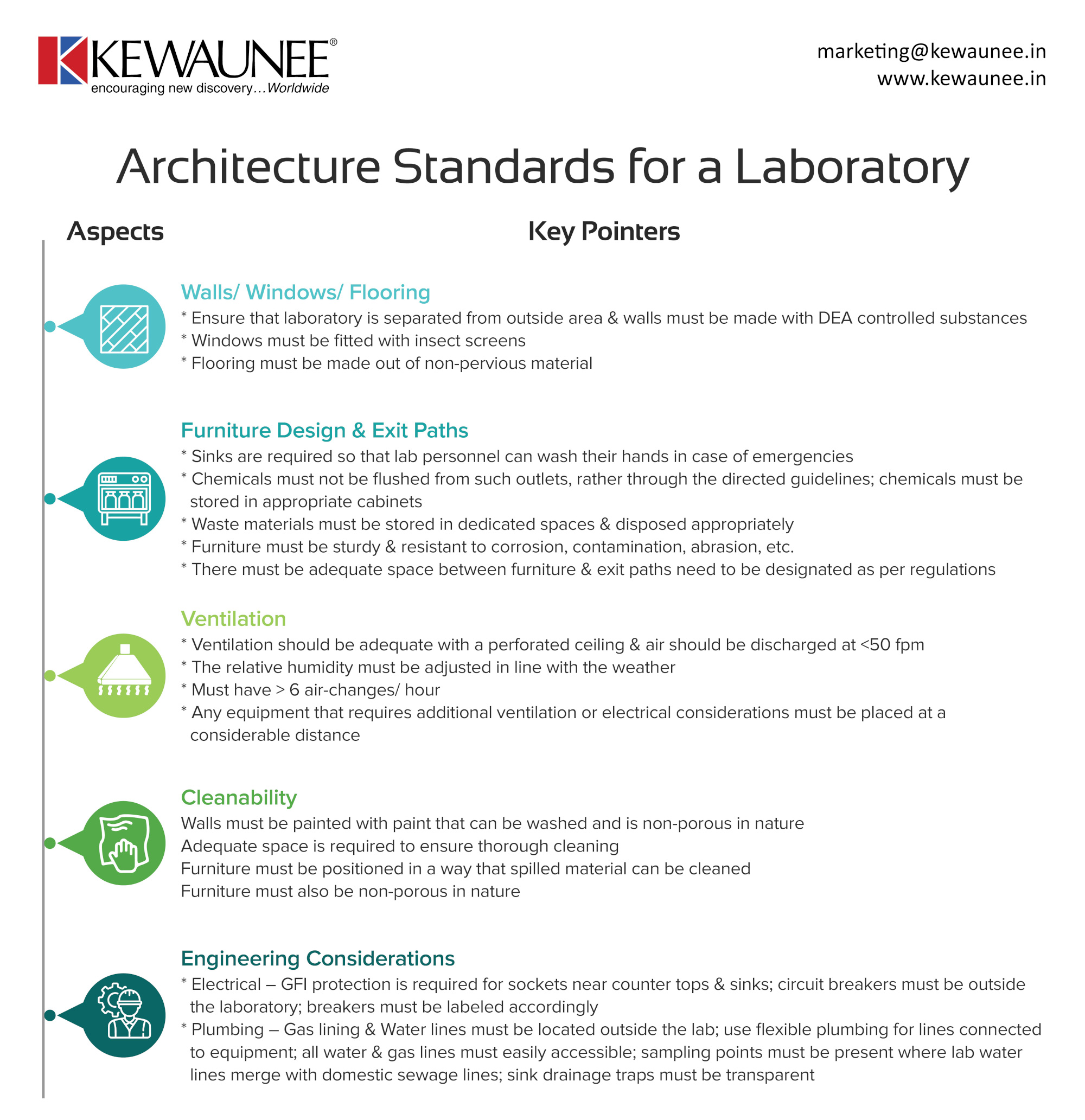Architecture Standards for a Laboratory
Laboratory Design is a highly though out and time-consuming process. Right from pre-design stage to commissioning the laboratory, a lot of work from many personnel is involved. But before carrying out the actual design, it’s important to consider certain aspects.
In this infographic, we’ve outlined the various considerations that need to be accounted for prior to designing the laboratory. If you’re looking for a complete done for your laboratory service, look no further. At Kewaunee International, we have turnkey services that handle the entire planning to commissioning process for you. More information can be found here.
| Aspects to Consider | Key pointers |
| Walls/ Windows/ Flooring |
|
| Furniture Design & Exit Paths |
|
| Ventilation |
|
| Cleanability |
|
| Engineering Considerations |
|
Source: Laboratory Design Guidelines, UNC Chapel Hill
Comments are closed.











